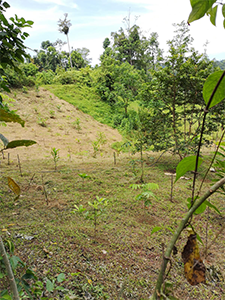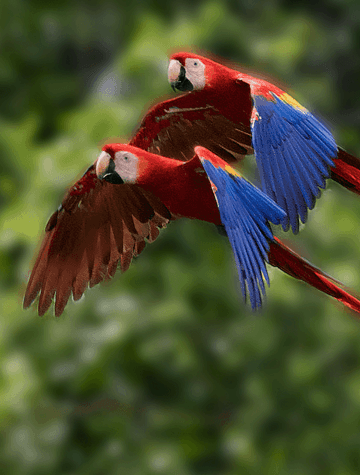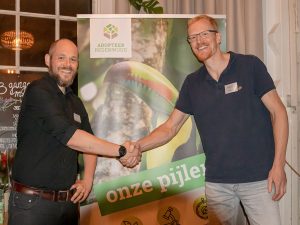CO2 Compensation – How does that work?
Do you want to offset your CO2? But have no idea how CO2 offsetting works? In this article we will tell you all the ins and outs about CO2 compensation so that you can reduce your CO2 emissions and offset them in the right way.
Reasons to compensate CO2
Maybe you want to live a carbon-neutral life, offset your air travel or reduce your company’s carbon emissions. Whatever your reason to start offsetting CO2, the main reason is climate change. Almost everything you do releases the greenhouse gas carbon dioxide (CO2). Especially when we burn fossil fuels like coal, oil and gas, a lot of CO2 is created. This causes CO2 levels in our atmosphere to be seriously elevated. Because of this increase, the earth retains more heat. As a result, we face climate change in the form of:
- Sea level rise due to melting of polar caps
- More extreme weather: more and severe heat waves and rainstorms
- Dehydration of some parts of the earth
- Global acidification affects life in sea water
By reducing and offsetting CO2 emissions, we can reduce CO2 levels in the atmosphere to a level where the earth does not heat up too much and remains livable for humans and animals.

How does CO2 Compensation work?
In CO2 offsetting, you make sure that in exchange for the CO2 emissions you cause, less CO2 is emitted somewhere else or CO2 is taken out of the air. There are different ways to offset CO2. For example, you can plant trees, invest in projects that save energy and replace alternatives that are bad for the environment with more environmentally friendly alternatives.
Greenhouse gases spread all over the earth, so your CO2 offsetting does not have to happen in the Netherlands. If you cause CO2 in Amsterdam, you can have it compensated via a wind farm in Groningen, but also, for example, by planting trees in Costa Rica.
How can I compensate CO2 myself
By mapping your footprint, you know how much CO2 you are emitting. You can reduce these emissions in many ways and offset the remaining CO2. Building a windmill or planting trees yourself is difficult. That is why there are all kinds of organizations and companies that arrange CO2 compensation for you.
With some airlines and travel agencies, for example, you can indicate right at the time of booking that you want to offset your CO2 emissions from your air travel. You then pay an amount on top of the fare. FlyGRN is a comparison site for airline tickets that compensates all or part of the CO2 emissions of your flight.
With some energy companies you can offset the CO2 emissions of your gas consumption, for example by investing in renewable energy or by planting trees.
You can also offset your CO2 yourself via the Internet. Calculate your CO2 emissions and choose an organization, such as Adopt Rainforest, Fair Climate Fund, Hivos and Trees for All, that can offset your CO2. Choose an organization that fits your ideals and find out how they offset their CO2. Is this done in a good way? Are local organizations involved? Is their contribution to sustainable development transparent? Do they have a certification?
CO2 Compensation certifications
With a Gold Standard Climate Offset certification, you can be sure that the company or organization offsetting your CO2 is doing so properly. These projects really do reduce CO2, contribute to sustainable development and work with local organizations.
What does CO2 compensation cost?
The cost to offset your carbon emissions is very low. Do you want to offset a return flight to Portugal, Spain or Greece? Then it will cost you a few tens of euros. Note that cheap providers often only compensate the CO2 emissions of the flight and not the full climate impact of flying. If you can spare the money, choose the most extensive compensation. For example, do you want to offset your energy consumption? Then for an average household that uses 1500 m3 of gas and 3300 kWh of electricity annually, this will cost between 45 and 65 euros.
Remember that reducing your CO2 emissions is always better for the climate than offsetting CO2. So make greener and more sustainable travel and food choices. Make your home more energy efficient and try to use less energy generated by fossil fuels. You can then offset the CO2 emissions that remain.
Curious to know how much CO2 you need to offset and how much that costs? Use our CO2 calculator

 on with Utrecht University. The foundation was ready for a new step to professionalize the research project and Utrecht University was looking for a stable and reliable partner in Central America to conduct solid research in the rainforest. So for both parties this is a wonderful collaboration! Because of this we will make a big step in professionalizing our current research on biodiversity in our reserve. Together with the visiting students we will focus on scientific research in which the diversity and development of nature in our reserve, with an emphasis on flora, is central.
on with Utrecht University. The foundation was ready for a new step to professionalize the research project and Utrecht University was looking for a stable and reliable partner in Central America to conduct solid research in the rainforest. So for both parties this is a wonderful collaboration! Because of this we will make a big step in professionalizing our current research on biodiversity in our reserve. Together with the visiting students we will focus on scientific research in which the diversity and development of nature in our reserve, with an emphasis on flora, is central.